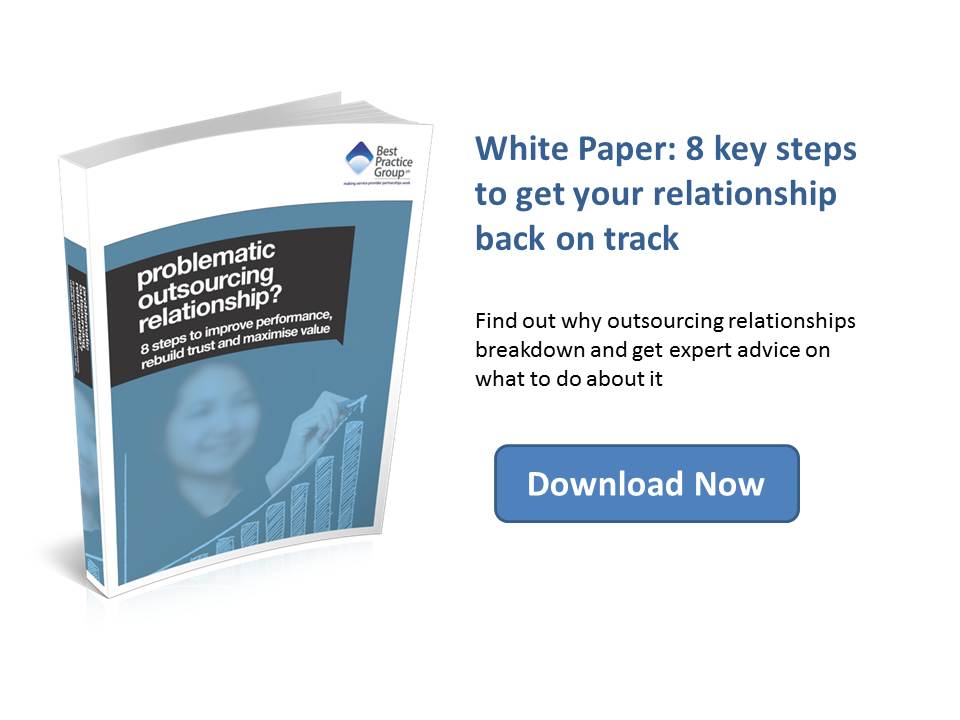Public sector organisations don’t usually sue other public sector organisations; it’s practically unheard of. So what has brought Solent NHS Trust and Hampshire County Council to blows?
According to a recent LGC report, the two organisations are suing each other in the high court. Is there a way we make sure that the government’s all too lean coffers are not further emptied in a wave of copycat legal disputes between public sector institutions?
When public sector relationships become less than conducive
For the last 4 years, Solent NHS Trust has been providing what they feel was a very good service as a community and mental health provider for Hampshire County Council. So when their contract for adult substance abuse services came up for renewal, they no doubt considered themselves a good candidate to be successful the second time around.
The contract – a 3 year provider agreement, reportedly worth £41.3m, with an option to extend for a further 2 years – was put out to tender. Solent lost out to South Staffordshire and Shropshire Trust, known as ‘Inclusion Drug Services’.
Sarah Austin, Solent director of strategy, said “We’re used to winning bids but sometimes we lose them, and we accept that it’s part of the normal life of organisations”. She went on to say “However, we believe there has been a serious error in the scoring of our bid. We have entered into a procurement dispute and that will enable us to see information about the scoring to understand why our scoring appears so wrong.”
And that’s the crux of this issue. According to reports that we’ve read, Solent believe that, for whatever reason, their bid was not assessed correctly because they got a surprisingly low score in their bid for the contract despite 4 years of prior good service to take into consideration.
So sure were they that something had become misaligned with the procurement process, that Solent successfully applied to the courts to suspend the procurement process back in December. Two months later the council managed to reverse that decision and the contract was awarded to Inclusion Drug Services. Not happy with this decision, Ms Austin is reported to have said that they now have no other choice but to pursue legal action against Hampshire County Council for lost income and damages.
The 6 key considerations to challenge-free procurement success
As we’ve seen in the case of Solent NHS Trust and Hampshire County Council, questions over the way a winning vendor/supplier is selected can result in costly legal action or delays to the project commencement. Unhappy suppliers in the public sector are quite able to prevent potential clients from progressing their contract award or suing for potentially large sums. Where these actions are successful, these can and often do cost the procuring organisation dearly if the courts agree that a less than robust tender assessment strategy has resulted in an unfair contract award.
It’s important to keep in mind that Public sector organisations are governed by strict European Procurement rules and regulations when it comes to the tender process. They are not designed to ensure diligence is adopted in what you are buying or whether it is suitable for its purpose; they are solely concerned with how you go about buying.
Think of the Regulations as more of a framework to fairness and transparency, not a roadmap to a fit for purpose solution. Getting to fitness-for-purpose is something that each procuring organisation must work through themselves. So adhere strictly to the Regulations in terms of transparency if you wish to avoid supplier/bidder procurement challenge, complications, delays and extensive unanticipated costs.
We have found that in the hundreds of public procurement projects we’ve been involved in, there are six fundamental considerations that will aid you in the development of a robust process to minimise the possibility of (a) your being challenged in the process and (b) to better align achieving a fit-for-purpose solution:
1. Transparency
Whatever you go to market for, it is imperative that your process ensures that all bidders are treated equally, without discrimination and that you act in a completely transparent way. Your responsibility to do this starts once the details of the service provision have been decided upon and do not end until the contract is awarded to the selected parties.
2. Rule-based decision making
Many public sector organisations usually have a ‘sanity-check-list’ of compliance matters when they issue OJEU notices and/or tenders to the marketplace. However, we often find that there is no documented formal rule-based process or method – so no formal structure to ensure the i’s are dotted and the t’s are crossed throughout the procurement process.
As part of ensuring transparency within the procurement process, it is critical that your evaluators have a clearly documented rule-based method and process which ensures bidders are aware of the criteria on which they shall be judged. This helps contribute to providing a platform that communicates equality of opportunity to them.
3. Clear and unambiguous language
Often when we undertake ‘procurement readiness assessments’ on tenders and requirements documentation we see that a number of vital things are unclear, (a) what business objectives the organisation procuring the service is looking to achieve once the service has been implemented, and (b) the importance the organisation ascribes to each part of the required service.
To avoid bidder/supplier challenges and arguably, more importantly, to get a better fit for purpose service delivery, we would always recommend the use of quantified service objectives, and clear, precise, language in your tender documentation.
The clearer your communication the more accurately the bidder will understand what it is you are trying to achieve. And, the better the bidder’s appreciation of your expectations, the lower the risk of misunderstandings that could lead to a challenges to your decision.
4. A consistent evaluation process
Each bidder/supplier may have a different solution to offer to achieve the requirements of your tender. Where these solutions are comparable, they should be treated in an identical manner, unless there is an objective justification for not doing so.
As part of your ‘rule based decision making’, you must ensure that all bidders are treated on a level playing field. By this I mean it is critical that your organisation objectively and uniformly applies the criteria it has set out. This is the only way to effectively back up your decisions should they be challenged at a later date.
Note that you aren’t restricted to only use criteria that can be objectively quantified. But you must verify bidders’ responses to determine their compliance with what you had set out at the beginning as the award criteria.
In other words, the selection and award processes must be based on bidders/suppliers knowing the criteria. To achieve this the criteria for assessing the suitability of bidders/suppliers, and for assessing the tenders in order to award a contract, must form part of the minimum information contained in the tender or contract notice. If you are intending to make the award to the most economically advantageous tender, it is important to also list in descending order of importance, all of the criteria that you have stipulated will apply.
So, the safest (and fairest) process is to ensure that all of your known criteria weightings and sub-weightings are provided to bidders at the outset. If you do elaborate on these once they have been made available to the bidding community, you must only do so in a manner that does not materially change the advice and information given to the bidders/suppliers on how the selection is to be made.
Again, such requirements ensure bidders/suppliers are aware of the existence and boundaries of the award criteria, and thereby to have equality of opportunity with all others in preparing their responses to your tender.
5. Be fair and equitable
As a public organisation procuring goods and services, you must act fairly in the course of public procurement.
All bidders/suppliers interested in your tender have to have an equal opportunity to bid for, and win, the contract. This principle of transparency requires visible decision making in order to show that you, as the procuring authority, are following the principle of equal treatment.
This in no way restricts the manner in which you clarify the service delivery details of the contract (given they are clear). It just has to be communicated in a manner that ensures transparency in the award of any contract to a bidder/supplier.
However, be careful that you don’t deliberately put in selection/award criteria that only ‘big suppliers’ can win. This, or similar restrictions, would be classed as discriminatory and is likely to provide ‘easy evidence’ to leave you open to procurement challenges.
6. Early market engagement
Some public authorities wish to have early market engagement with potential bidders/suppliers to help shape their tenders for what they go out to market for.
Issuing either a PIN notice or getting involved in Tech-UK’s ‘Concept Viability Workshops’ is a fair, equitable and transparent way to obtain market intelligence without risking a challenge later in the procurement process. To do this in a different manner that could be construed as surreptitious, is likely to lead to claims that certain bidders had a ‘step-ahead’ advantage over other potential bidders that did not have the benefit of an ‘early series’ of conversations before the rest of the market knew about the opportunity.
Conclusion
While public organisations that procure goods and services wish to avoid the costs, delays and other risks associated with procurement challenges from bidders, the over-riding objective of most is to ensure that they procure fit-for-purpose services in a manner that ensures they can drive maximum value for money.
However, to avoid bias we have European legislation in place that means these objectives have to be achieved in a fair and equitable manner with the bidder/supplier market. The onus on public sector organisations to make sure they don’t step out of line on this is exceptionally high. The transparency requirements within the legislation governing procurement award/selection criteria clearly dictates the need for a rule-based approach in order to:
• Limit subjective discretion
• Ensure the objective and uniform application of the award/selection criteria
• Enable the selection process to be externally reviewed for impartiality.
Keeping fastidiously documented records that explain the relative weightings assigned to the award/selection criteria, the procedures and indicators used to assess compliance with each aspect of the criteria, and the reasoning that underlie your decisions, provide sensible and equitable foundations to a challenge risk-minimising procurement process. To also publish or share these records at appropriate times means that you promote a sustainable, transparent, fair and equitable process of contract award, avoiding challenges but also ensuring you end up with fit-for-purpose solutions that achieve maximum value.



